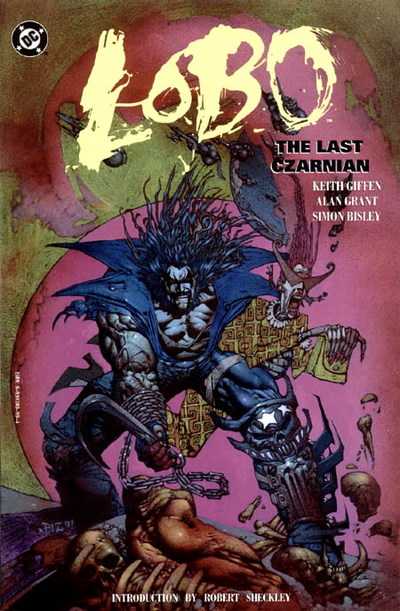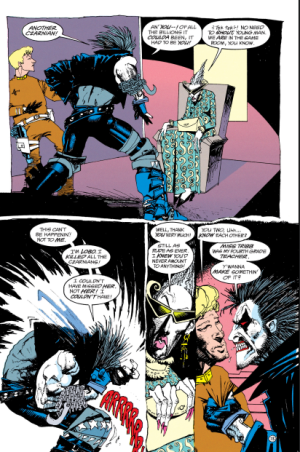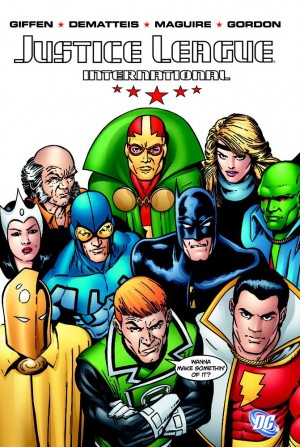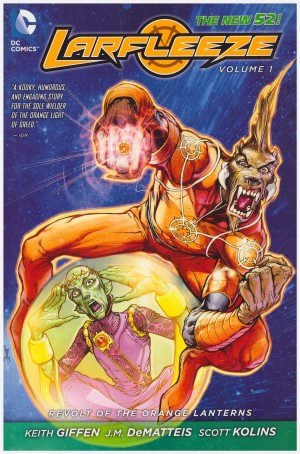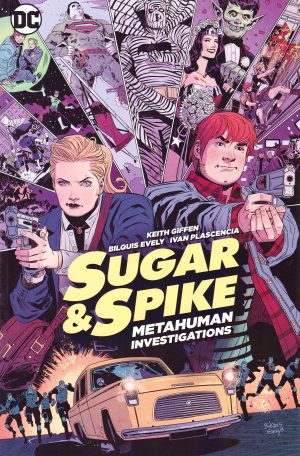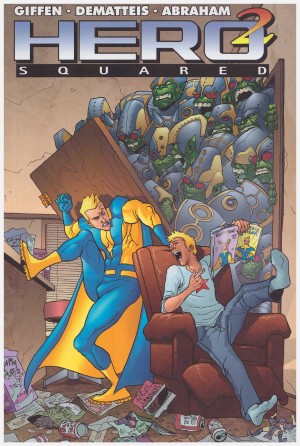Review by Frank Plowright
Keith Giffen created Lobo as the galactic equivalent of a biker mercenary for space opera series Omega Men and subsequent use in other series of the late 1980s. He was distinctively flippant and nihilistic, but his transformation into a 1990s superstar is substantially due to the art of Simon Bisley. Instead of Lobo’s excess being reined in as it was when he was a co-star, Bisley ramped it up to eleven.
The Last Czarnian is also the title of an unauthorised biography of Lobo, pages from which are scattered throughout the book. It’s largely accurate in depicting Lobo as a sadistic murderous thug on a planetary scale, about which the Main Man is not happy. He’s intending to sort out the author when given a mission by his employer to escort a prisoner, who turns out to be his former teacher Miss Tribb. Not only did she somehow survive his massacring the remainder of his race, but she’s also author of Lobo’s biography.
By later standards Bisley’s art is relatively tame, perhaps because he’s working with Giffen’s breakdowns. He follows the story, defines the characters consistently and avoids naked women, but the energy and lack of restraint when compared to the standard DC superhero comic of 1990 was off the scale. His US début was an immediate success, helped by the cover price of the opening issue being only 99 cents, and combined with a funny plot from Giffen and hilarious dialogue from Alan Grant, Lobo’s short term success, or excess, was assured.
It still stands up well, which is all the more remarkable considering there’s only the one joke perpetuating four chapters. Lobo will resort immediately to violence in every situation and revels in mayhem, but faced with the nagging woman who taught him when younger he reverts to a child muttering under his breath. It’s surprisingly effective in sustaining four chapters of escalating violent slapstick in Warner Brothers cartoon style, and is constantly ramped up via assorted parties on Lobo’s trail despite his fearsomely violent reputation.
It’s noted in some places that page 14 from the final chapter is missing from this collection and subsequent reprints, but there’s no conspiracy to deprive readers of something now considered too shocking to reprint, it’s just that the missing page was a fake ad in the original comic. Unless of course it replaced a page too shocking to show in the original comic as well.
While DC haven’t been able to sell Lobo as a concept in the 21st century, they’ve had no trouble selling Giffen, Grant and Bisley’s version as part of assorted repackages. It’s found in The Lobo Slipcase Collection (1992), Portrait of a Bastich (1998 and 2008), both times combined with the following Lobo’s Back’s Back, then in Lobo by Keith Giffen and Alan Grant Volume 1 (2018) and Big Fraggin’ Compendium (2024).
